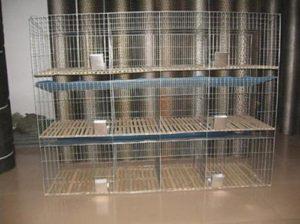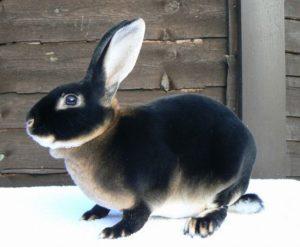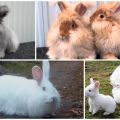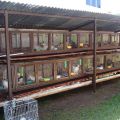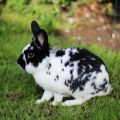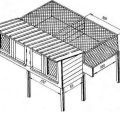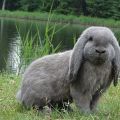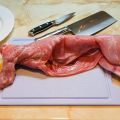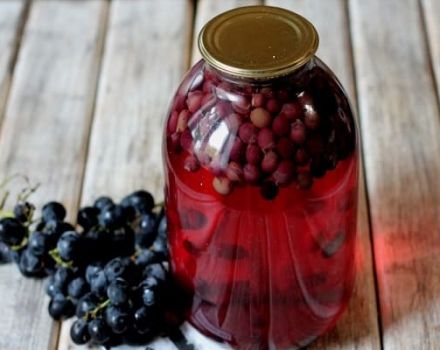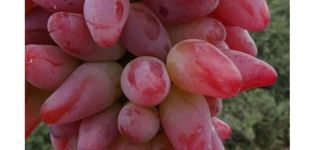Description and characteristics of Angora rabbits, maintenance rules
The appearance of Angora rabbits is pleasing to the eye. They resemble a fluffy cloud and seem like a toy. These animals can be used not only to obtain the finest valuable down, but also as complaisant pets. There are several varieties in the breed, which differ in appearance and size, body weight. Miniature dwarf Angoras weigh a kilogram or one and a half, large representatives of the species reach 6 kilograms.
Origin of the species
For the first time, Angora rabbits, as representatives of the downy breed, were bred in Turkey, which was then the Ottoman Empire. They came to Europe in the twenties of the 18th century together with sailors from France. This country established political and economic contacts with the Turkish sultans. Along with loads of fabrics, jewelry, carpets and spices, unusual sailors - the progenitors of the modern breed - arrived at the court of the French kings.
The name of the breed comes from the distorted toponym Ankara - a city in Turkey. The same name was given to the breed of white cats, distinguished by their fluffiness and light, voluminous fur (Turkish Angora).
Having become popular, the Angora rabbits began to rapidly multiply and interbreed with other, local and imported breeds. As a result of such long-term and centuries-old selection, various varieties were obtained, including the dwarf Angora rabbit, which became a favorite among representatives of high society.
Now animals of this breed are used both as pets and as productive animals, sources of valuable fine fluff.
Description and characteristics of the Angora rabbit
The main color option for the Angora breed is pure white. But the standard includes other colors:
- Gray.
- Beige.
- Blue.
- The black.

Long-haired individuals look like a downy ball with ears and shiny red eyes (in the white varieties). They have a rounded or oval compact body, long light coat, reaching a length of 25 centimeters. The density of the coat is significant - up to 90-92%. The ears are short, the eyes are large.
The average weight reaches 2.5-4 kilograms, representatives of large varieties can weigh 5-6 kg. Juveniles grow extremely quickly, reaching 2 kilograms of weight by the age of seven months. With proper care and proper nutrition, life expectancy reaches 7 years on average.
Breed types
Over the decades of breeding, the following breeds have been bred:
- Dwarf decorative rabbit. Used as a family pet.Differs in miniature size, good-natured, docile disposition, friendliness towards people and other pets. A variety is the Angora fold - a lop-eared breed.
- Atlas, or satin - large, up to 5 kg, crawl, not giving a lot of fluff, but its quality is high. Down is durable and highly soft.
- English rabbit, weighing up to 3 kilograms, does not have long down only on the nose. Up to 450 grams of down is received from it per year.
- White downy rabbit weighs up to 4 kg, gives up to 500 grams of down per year. Practically devoid of spine.
- The French rabbit weighs up to 4.5 kg, and up to 550 grams of down is collected from it in 12 months.
- Giant is a breed with an individual weighing up to 6 kg, distinguished by the presence of brushes on the ears. Annual productivity is 1.2 kilograms.
- The German breed is an animal weighing up to 3.5 kilograms, which can be cut every two and a half months. The most productive, yields 1.5 kilograms of fluff annually.
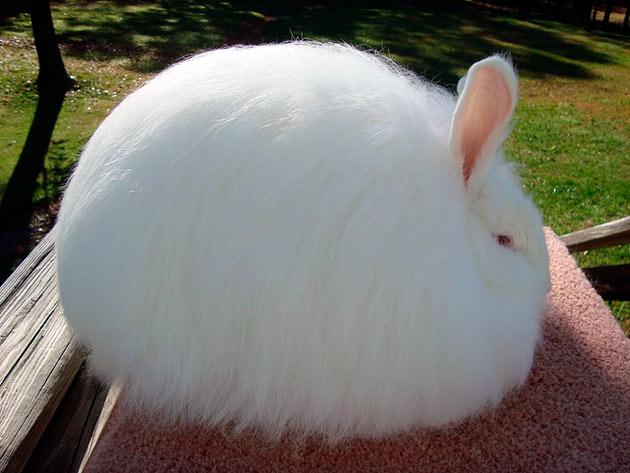
Choose a variety for its purpose: to get fluff or as a home resident.
Conditions of maintenance and care
The houses of Angora rabbits are kept in cages, in yards - in spacious aviaries. They need to be kept clean and tidy, as their light, fluffy coat easily gets tangled and tangles that are difficult to comb. Such a procedure is necessary in any case, but stray hair can become a source of skin irritation, and parasites start in it.
Animals are afraid of drafts and sudden changes in temperature, are sensitive to changes in humidity, too bright sunlight. It is necessary to ensure safety by hiding electrical wires, documents, shoes and anything that they can chew on. Angora rabbits lack the gag reflex, so they can swallow their own down. This is dangerous and can kill the animal. The condition of the pet's coat must be closely monitored.
When breeding for fluff, pets are kept in cages one by one. This is due to the fact that they are territorial animals, and will literally defend their territory to death. It also makes it much easier to keep the valuable fluff in perfect condition.
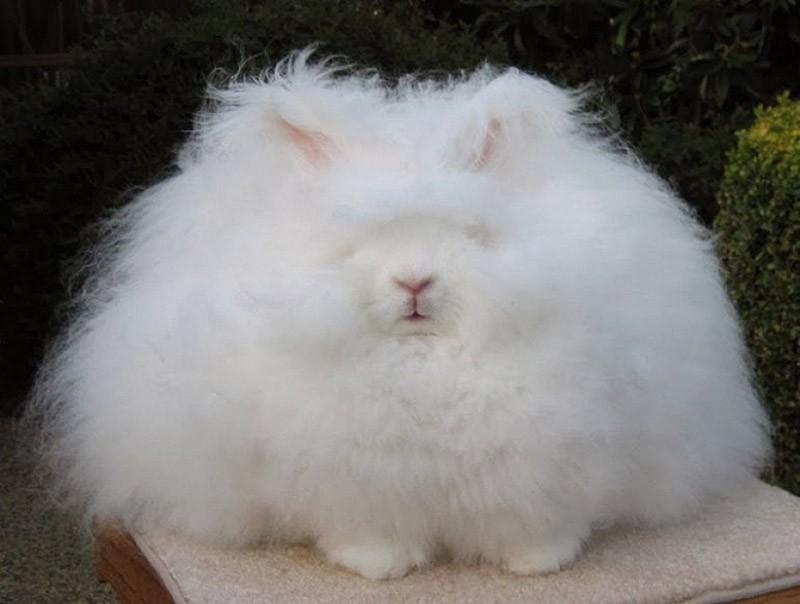
What to feed your rabbit
The purpose of breeding angora rabbits is to obtain high-quality fluff, therefore, when feeding, you need to monitor the quality of food and its saturation with nutrients and vitamins. To do this, food is enriched with green grass and vegetables in the warm season, and in winter - with hay. Do not give herbs with spinous spikelets such as feather grass, which can get stuck in the esophagus or injure the mouth, as well as cabbage, because it causes fermentation in the intestines.
Food that is not eaten right away should be removed because decomposing waste leads to disease. Also, rabbits should have clean, fresh water at all times.
Breeding the breed
Rabbits of the Angora type enter puberty late, therefore, the female is allowed to mate only after reaching one year. The duration of gestation and the number of young rabbits per year are standard - up to 8 individuals. During the gestation period and subsequent feeding, the females are provided with silence, a calm environment and are protected from temperature extremes and high humidity.

Diseases and methods of dealing with them
Rabbits of all breeds have increased requirements for nutrition and living conditions, but Angora are especially picky. Their health must be closely monitored, because they can get sick if hygiene rules are not followed, due to drafts and humidity.
Angora rabbits can suffer from the following diseases:
- Colds - pneumonia, acute respiratory infections, arising from non-compliance with the conditions of detention.Wool should not be allowed to get wet, because it is dense and thick, dries for a long time, leading to hypothermia. Drafts also work.
- Diseases of the gastrointestinal tract caused by stale food, water, or an abundance of succulent food that contribute to flatulence.
- Infections of various origins (conjunctivitis, rhinitis, dermatitis, and so on). The causes of infections are staphylococci and other pathogens.
- Invasions - coccidiosis, fascioliasis, scabies and other diseases caused by parasites. There is no cure for rabbit fascioliasis.
At the slightest sign of unhealthy rabbit it is necessary to show the veterinarian. These creatures are very fragile and sensitive, their diseases develop rapidly. If you take your time, you might lose a friend.
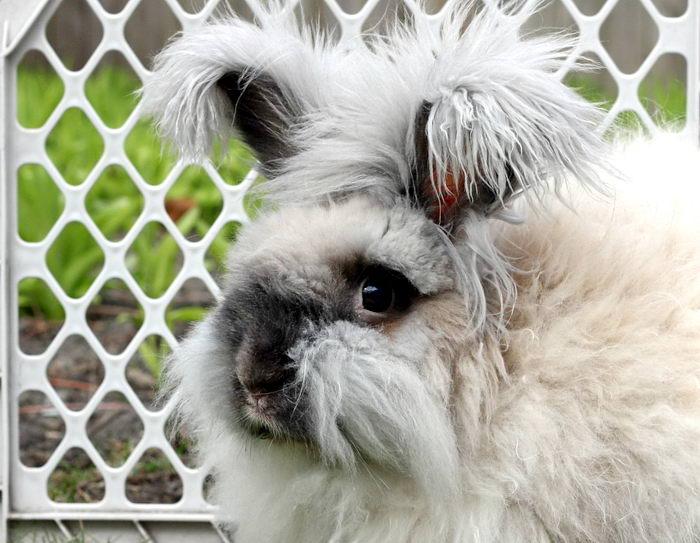
Interesting Facts
At the beginning of the XXI century, China became the leader in the industrial breeding of angora rabbits. It produces the largest amount of Angora down in the world to obtain valuable woolen fabric. But in Europe, rabbits of this breed are popular, although not on the same scale as in the Middle Kingdom. They are bred in Hungary, Poland, Czech Republic and France. Most of all here are dwarf rabbits - funny and beautiful favorites of the whole family.
Tips for choosing a rabbit
When buying an animal, regardless of the purpose (for breeding, for fluff or as a pet), first of all, you should pay attention to the appearance and behavior of the rabbit. He should have clear eyes, a clean nose and ears, and no tangled, greasy fur. The animal should be friendly, cheerful, active enough.
It is undesirable to buy a rabbit younger than 2-2.5 months, since only at this age it becomes independent of its mother and can feed on its own.
It is dangerous to buy animals from unknown sellers. It is better to focus on nurseries, experienced breeders, representatives of professional forums. Breeding Angora rabbits must have documents confirming the purity of the blood. Observing the rules, you can get an adorable home friend, cheerful, playful, with a good character, who will live 6-8 years, delighting the owners.
